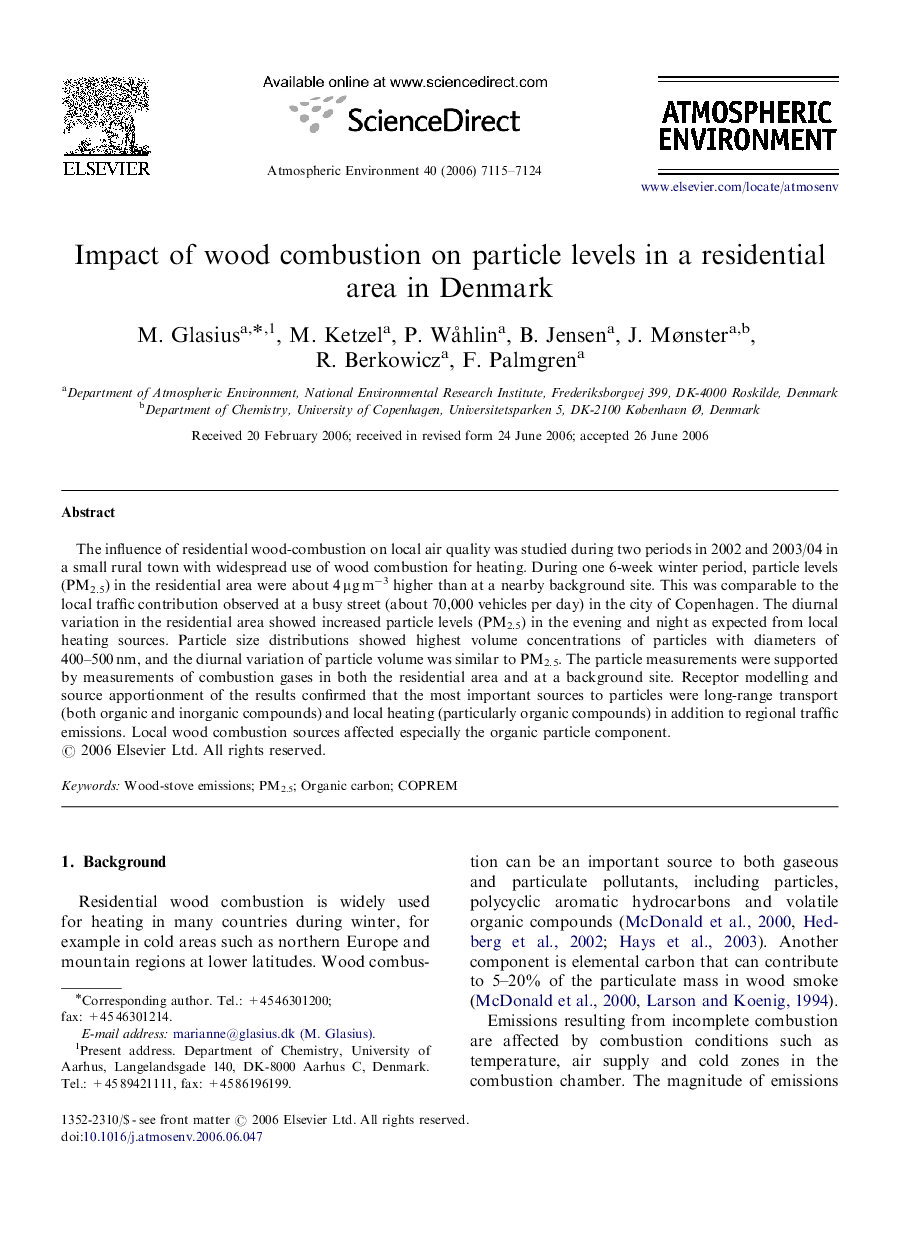| Article ID | Journal | Published Year | Pages | File Type |
|---|---|---|---|---|
| 4443760 | Atmospheric Environment | 2006 | 10 Pages |
The influence of residential wood-combustion on local air quality was studied during two periods in 2002 and 2003/04 in a small rural town with widespread use of wood combustion for heating. During one 6-week winter period, particle levels (PM2.5) in the residential area were about 4 μg m−3 higher than at a nearby background site. This was comparable to the local traffic contribution observed at a busy street (about 70,000 vehicles per day) in the city of Copenhagen. The diurnal variation in the residential area showed increased particle levels (PM2.5) in the evening and night as expected from local heating sources. Particle size distributions showed highest volume concentrations of particles with diameters of 400–500 nm, and the diurnal variation of particle volume was similar to PM2.5. The particle measurements were supported by measurements of combustion gases in both the residential area and at a background site. Receptor modelling and source apportionment of the results confirmed that the most important sources to particles were long-range transport (both organic and inorganic compounds) and local heating (particularly organic compounds) in addition to regional traffic emissions. Local wood combustion sources affected especially the organic particle component.
